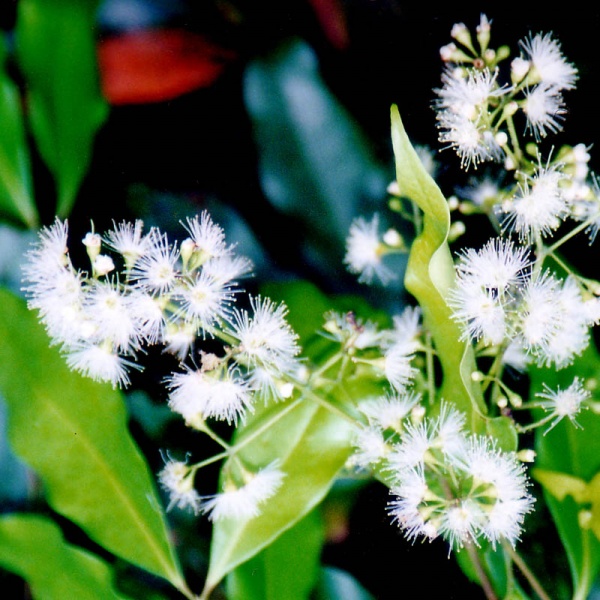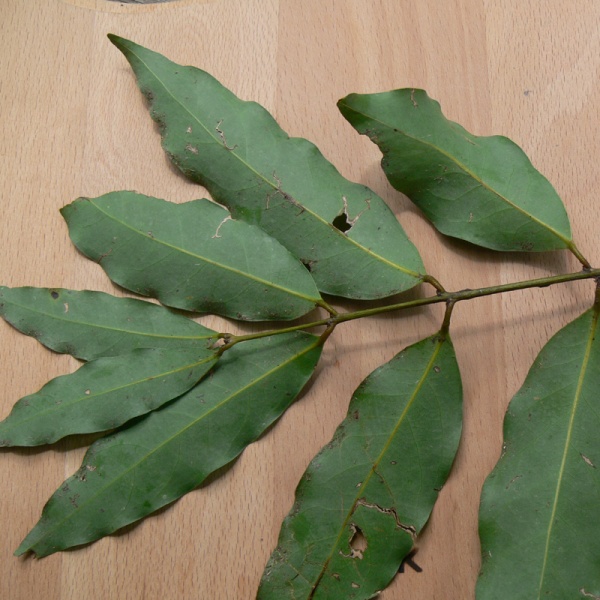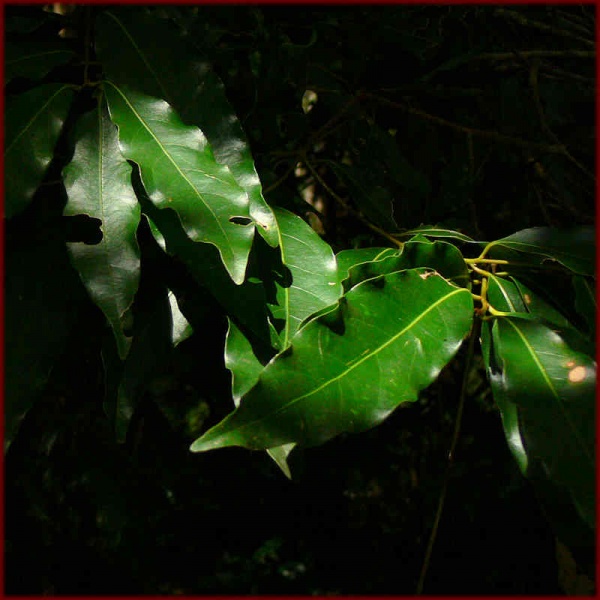Scientific Name: Cinnamomum oliveri
-
Pronunciation:sinn-ah-MO-mum oliver-ee
-
Common Name:Olivers Sassafras, Camphorwood




-
Derivation:Cinnamomun: Latin Cinnamomum = Greek Kinnamomon -cinnamon oliveri: after D. Oliver
-
Type:
-
Family:LAURACEAE
-
Flowers:Cream to greenish October to November
-
Fruit:Drupe, ovoid, up to 12 mm long. One seed. Ripe March. Fruit ovoid, c. 12 mm long, black, seated in ribbed cupular receptacle; ripe Mar. The fruits are often galled and irregular in shape, 20–50 mm diam., yellowish whitish with an outer powdery fungal coating, aromatic.
-
Vegetation Type:Sub-tropical rainforest and moist riverine scrub
-
Species List:Wooroi Day Use Area Tracks, Cooloothin Corner, Fraser Island, Mill Point, Batianoff 87, Upper Yandina Creek, NNP Palm Grove Kin Kin Scrub
Cultural Notes
Timber used for indoor work. Strong scent of camphor retained for many years||
Identification Notes
Branchlets: green sometimes tending to be pendulous. ||Trunk: not buttressed, ||Bark: grey or brown with a thin corky layer; ||strongly aromatic in all parts ||LEAf: Simple, opposite or nearly so; margins wavy; blade glossy, green above, grey/green waxy below. Leaves are narrow oblong to oblong-elliptical, 8-15 cm long, scented. Domatia absent. Oil dots numerous and fragrant. Fine reticulum distinctive.||New growth: Pendant.||
Associated Fauna
Butterfly host plant: Blue triangle. http://www-staff.it.uts.edu.au/~don/larvae/papi/sarped.html ||
Landscaping Notes
Landscaping potential in suitable areas. Graceful foliage and fruit, which attract birds, makes this a desirable tree. ||Successfully propogated by Mooloola Native Nursery|| Successfully propagated by Barung Landcare||


